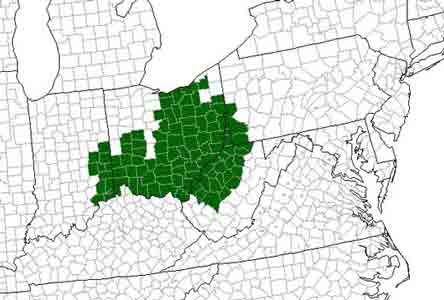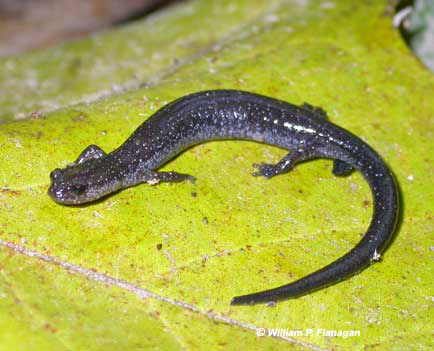
Ravine Salamander
(Plethodon electromorphus)
 |
 |
|
|
Distribution of the Ravine Salamander (from the AR MI Atlas)
|
An adult Ravine Salamander.
|
|
Description: Ohio’s most slender salamander. One-half of this animal’s total length (6”) is made up of its tail. The Ravine Salamander is dark brown to black above with silvery white or brassy flecks. Compared to the Red-backed Salamander, there is less flecking on the underside and the chin is a paler gray. |
||
Distribution in Ohio: Southern and eastern Ohio, exclusive of the northeastern corner of the state and the flatlands of the Little Miami drainage. |
||
|
|
||
Status in Ohio: Widespread and locally abundant. |
||
|
|
||
Habitat: Forested hillsides and slopes, where it is almost exclusively found under rocks. |
||
|
|
||
Life history: Eggs are deposited in the summer under rocks. The larval stage is completed within the egg. The eggs hatch in late summer or early fall and the juvenile salamanders remain underground until the following spring. Sexual maturity is reached at 2-3 years. |
||
|
|
||
Conservation: Ravine Salamanders require habitat of rocky hillsides within forests. Destruction of these areas is the major threat to populations. Logging can also eliminate populations by increasing the temperature and rate of evaporation on the forest floor. As with all lungless salamanders, pollution, including pesticides and herbicides, are easily absorbed and very toxic. |
||
Last modified:
|
Ohio Amphibians · Ohio Salamander Web · Ohio Salamander Species · Amphibian Habitats · Salamander Monitoring |
|